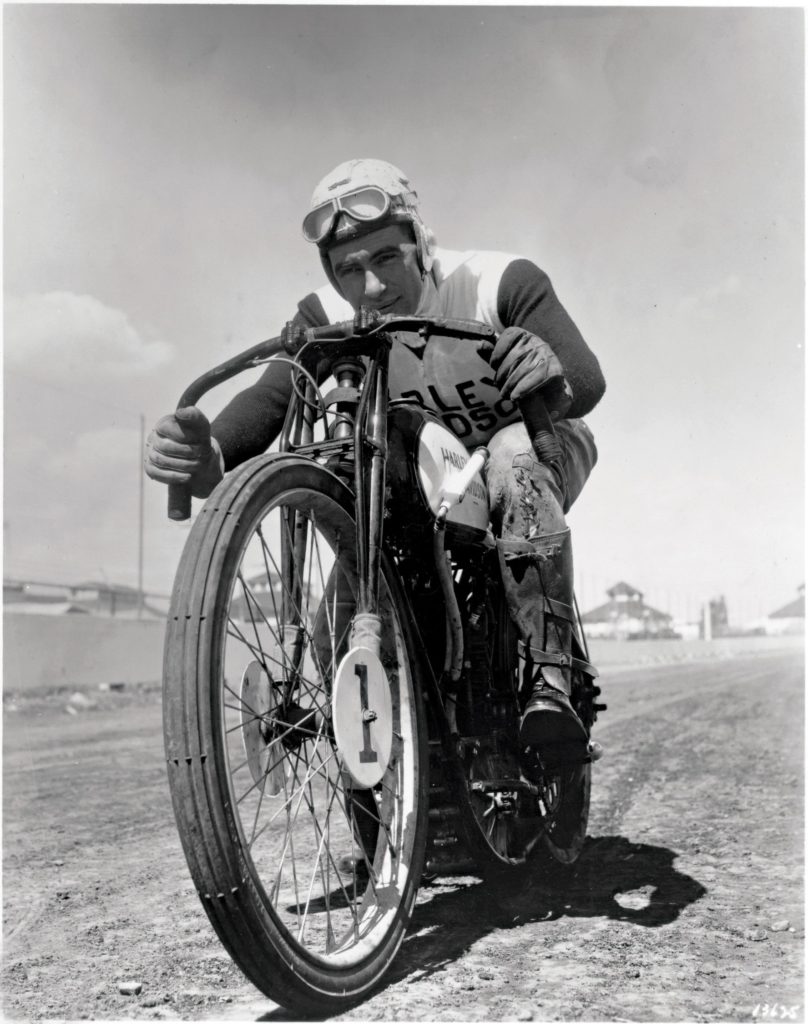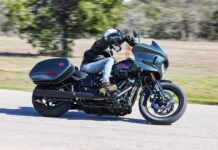
In the early years of the 20th Century, motordrome – or board track – racing was the most dangerous game of all, and Harley-Davidson was right in the thick of it
By Bill Jackson, Senior Archivist, Harley-Davidson Motor Co.
Notorious for some very exciting (and very ugly) reasons, motordrome – or boardtrack – racing remains one of the most interesting eras in motorcycling history. Whether it was the speed, the spectacle, the splinters, the heroes, the technically advanced machinery, the danger or the gruesome crashes (likely all of the above), board track racing was wildly popular with the public and the Harley, Indian and Excelsior factories, right up until it was outlawed in the late 1920s.
“It is not certain the exact date and place the sport began,” writes H-D Senior Archivist Bill Jackson, “but board tracks were being built by 1908 and the class quickly gained great popularity. The tracks were either oval or circular, with extremely steep banked curves. Their surfaces were composed of two-by-fours (laid on edge) or two-by-twos nailed to wooden frames. The lumber was almost always rough cut to allow better grip, and most tracks of the time are credited as having been designed by an engineer named Jack Prince.

“Official Harley-Davidson factory racers such as Otto Walker and Leslie ‘Red’ Parkhurst were taking on the tracks at Sheepshead Bay, NY, Playa Del Ray, CA and points in between, including Milwaukee, WI. They competed against racers riding the likes of Indians, Reading Standards, Thors and Merkels, to name a few. But what people remember most about the motordromes was the immense danger they posed to rider and spectator alike.
“The steep banks of the tracks allowed for speeds in excess of 120 mph. Worse yet, it was not unheard of for planks to break loose, or for large splinters to form, and woe to the rider who went down and slid into one of them. And if that didn’t add enough suspense, oil from the motorcycles often made the tracks slick.

“An infamous race in Newark, NJ in 1912 took the lives of four spectators and four racers. Other races saw bloodshed, as well, and while the sport remained popular with crowds, it lost popularity with the media and local governments. The periodicals began to call the tracks ‘murderdromes’, and board track racing was eventually outlawed by local and state governments across the nation.”
But what a time to be alive! Wow.


















